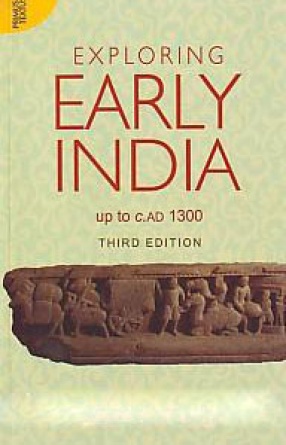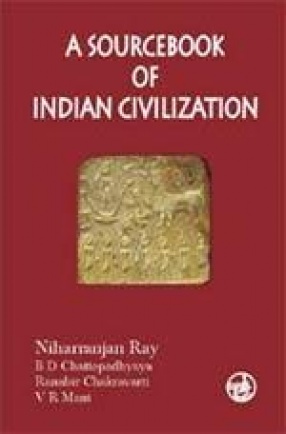
Showing all 6 books




This third edition of Exploring Early India up to c. AD 1300 offers a broad overview and connected narrative of early Indian history, taking into consideration major historical developments from the earliest times to c. AD 1300. Salient features of political, socio-economic and cultural history have been discussed elaborately, and regional diversities in early Indian history have been commented upon, keeping in sight the commonalties at the subcontinental level. ...

Exploring Early India presents an overview of the protracted past of the subcontinent from the earliest times to c. AD 1300. The book traces the principal features in political, socio-economic and cultural history (including religious life and art activities) of the subcontinent by accommodating salient researches in early Indian history. A major feature of this book is the author's engagement in analyzing changes in socio-economic, political and cultural life ...

The history of India begins with evidence of human activity of Homo sapiens as long as 75,000 years ago, or with earlier hominids including Homo erectus from about 500,000 years ago. The Indus Valley Civilization, which spread and flourished in the northwestern part of the Indian subcontinent from c. 3300 to 1300 BCE, was the first major civilization in India. A sophisticated and technologically advanced urban culture developed in the Mature Harappan period, from ...

This collection of fifteen essays and extracts by some of the leading scholars of early Indian history underlines the significance of trade in the social, political, economic, and cultural development of the subcontinent. The essays cover the period from the third millennium BC to c. AD 1300. They reflect the changing perspectives, methodologies, and approaches to the study of early Indian trade. The contributors focus on not only trade and economic activities ...

A Sourcebook of Indian Civilization aims at familiarising its readers with the various aspects that go into the making of the history of Indian civilisation. The arrangement of the material in the chapters and selections conform to a rationally conceived and planned scheme of history. The contents of the book presents an extensive view of Indian life and thought.

Situating trade and traders in the overall agrarian milieu of early India, this book highlights the diversities of merchants and market places, which are not viewed as an undifferentiated category. The Author strongly argues against the perception of declining trade in India during the period AD 600-1000, and demonstrates the linkages of trade at the locality level during this period. In-depth analysis of maritime commerce in the Bengal coast (C. 200 BC To AD ...
